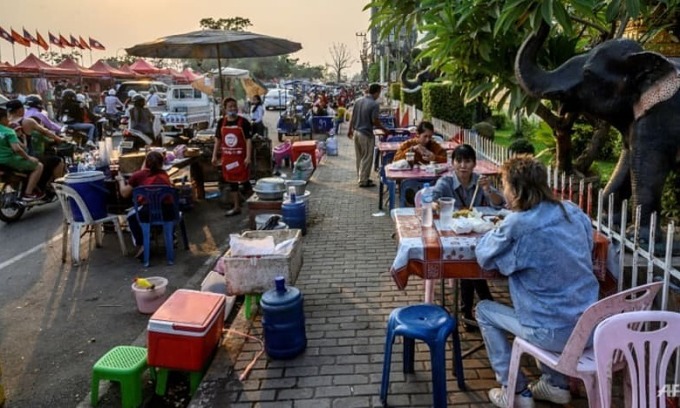A first-timer’s guide to Myanmar
Things are changing rapidly in Myanmar (Burma), politically and for
tourists, so it’s an exciting time to visit. But information can be
difficult to access once inside the country, so it really pays to
research beforehand. As Myanmar struggles to meet demand by would-be
tourists, two travellers share the benefit of their recent experience in
this enchanting country
First impressions
On leaving Yangon’s modern-looking airport, it quickly becomes apparent that Myanmar’s largest city is quite unlike anywhere else we’ve visited in Southeast Asia. Ancient cars, designed for the left-hand side of the road, are driven on the right. Taxi drivers’ lips and gums are stained red by chewing betel leaves. Periodically, they wind down the window (if there is one) to spit large quantities into the gutter.Motorbikes are banned in Yangon, and outside rush-hour, the streets can seem eerily quiet, especially when walking by huge buildings deserted by the military government when they relocated to Naypyitaw, 200 miles to the north. Aside from this, it seems little has changed in Yangon in the last half-century. There are few brands that a foreign visitor would recognise, no ATMs they can use, and English is not widely spoken or understood.
Travelling around Myanmar
Buses between the main tourist destinations typically leave dusty out-of-town stations (access by cheap taxi) with useful regularity. It’s helpful to book tickets a day or so in advance – the buses usually travel fully laden. Numerous independent travel agents and even guesthouses can help with this. The journeys can be long – 12 or more hours between Inle Lake and Yangon – but are perhaps shorter than you may be told. We arrived three hours early on two occasions (a mixed blessing when scheduled to arrive at 6.30am).Buddhist temples and monasteries dominate Myanmar’s cities and countryside, architecturally, spiritually and culturally. You won’t want to miss Shwe (‘Golden’) Dagon in Yangon, Bagan’s scarcely believable number of temples or the three old capitals near smoggy Mandalay. Equally, the serenity of Inle Lake, with its unique leg-paddlers and much more, must be experienced.
It’s not difficult to get off the beaten track, even in popular areas. Arguably the best way to experience Bagan is to do so independently, following one’s instincts. Hire a bike or even horse and cart and venture down quiet sandy lanes, and have an ancient temple all to oneself. In Inwa, near Mandalay, we made our own way on foot through fields and villages, discovering abandoned temples, chuckling locals and rural life. If trekking for three days through villages and farmland to Inle Lake isn’t challenging enough for you, consider the less explored countryside around Hsipaw to the north.
Where to stay and how to pay
Accommodation prices are on the rise, by up to 50% since our guide’s publication three months earlier. But Myanmar is still a very affordable place to visit. Food, drink and travel are inexpensive. It’s possible to enjoy Myanmar on US$30 a day. The cost of relaxing at Ngapali Beach is significantly higher.In the peak January to February season, we heard it’s necessary to book accommodation a couple of days in advance. In March, which traditionally sees slightly fewer tourists, we had no trouble organising accommodation on the day, although we did encounter several fully-booked guesthouses and hotels. If your choice of accommodation is important to you, book ahead, preferably by phone. (Most don’t have email.)
Don’t bother trying your foreign SIM card either; it won’t work. You can call from your guesthouse lobby, or from a ‘public’ phone on the street. Residential-style phones can be found on street-side tables and in shops. You make a call and pay the attendant a small amount, usually 100 kyat (‘chat’) per minute.
Which brings us on to the peculiar situation regarding money. It is still true that you must bring pristine US dollars, with no folds, tear or marks. However, the banks, and by extension the government, have taken a step towards reality and will now sell you kyat at a rate that more truly reflects the real value, something that was previously only attainable on the black market. The banks gave around 815 kyat to the dollar, barely lower than the offers from street dealers of dubious virtue, and a much lower risk of being conned.
Aside from black market money changing, you’re unlikely to run into any trouble in Myanmar. The police and military seem to be keeping a low profile. You’re more likely to see posters and T-shirts featuring National League for Democracy leader Aung San Suu Kyi. It’s an exciting time in Myanmar’s history, and an ideal time to visit.
HUONG VIET TRAVEL – MEMBER OF PATA, ASTA, IATA
Add: 20 Nguyen Truong To Str, Hanoi, Vietnam
Tel : (84-4) 37162149 Fax: (84-4) 37161738
E–mail address: sales@huongviettravel.com
Website: www.huongviettravel.com | http://www.aseantravelandtours.com | http://www.visavietnamonline.com | http://www.huongvietjsc.com
Tel : (84-4) 37162149 Fax: (84-4) 37161738
E–mail address: sales@huongviettravel.com
Website: www.huongviettravel.com | http://www.aseantravelandtours.com | http://www.visavietnamonline.com | http://www.huongvietjsc.com






Nhận xét
Đăng nhận xét